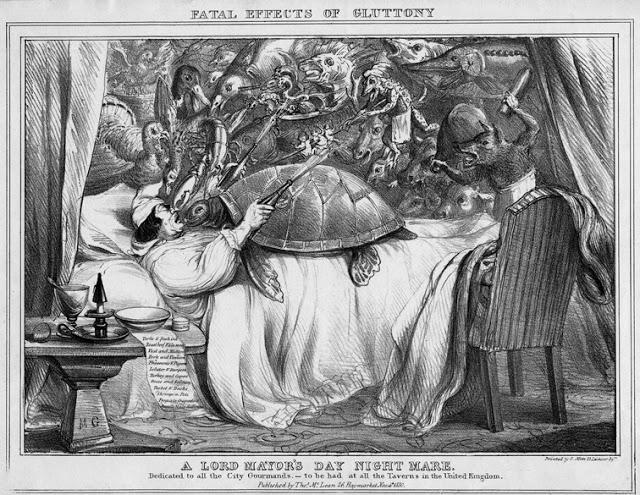...but Beware of the Fatal Effects of Gluttony
I have often thought that if the great biblical deluge had taken place in the eighteenth century and Noah and his family had been English, all those creatures which God placed in his care would just not have survived. They would have all been devoured by Mr and Mrs Noah and all the little Noahs before they even had a chance to go forth and multiply and fill all the corners of the earth. Eighteenth century English diners were serial carnivores and I sometimes think it must have been their gastronomic ambition to gnaw their way through the entire creation. Just look at this pie baked in 1763 in the kitchen of a long vanished country house close to where I live in the English Lake District.
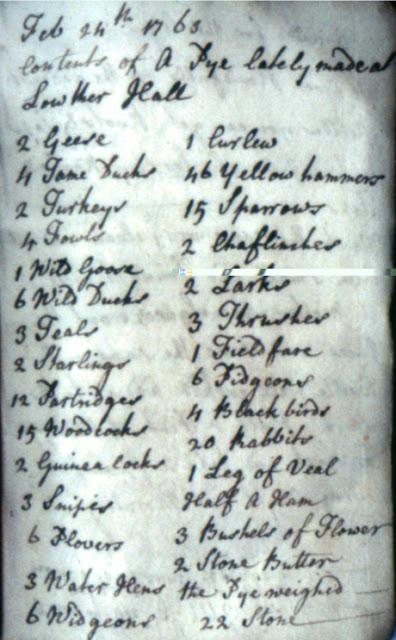
From the Manuscript Commonplace Book of Richard Hoggart of Clifton, Westmorland. 1760s (private collection)
If you find the handwriting a bit difficult, here is a transcript.
Feb 24th 1763 Contents of a Pye lately made at Lowther Hall
2 Geese, 4 Tame Ducks, 2 Turkeys, 4 Fowls, 1 Wild Goose, 6 Wild Ducks, 3 Teals, 2 Starlings, 12 Partridges, 15 Woodcocks, 2 Guinea Cocks, 3 Snipes, 6 Plovers, 3 Water Hens, 6 Widgeons, I Curlew, 46 Yellow Hammers, 15 Sparrows, 2 Chaffinches, 2 Larks, 3 Thrushes, 1 Fieldfare, 6 Pidgeons, 4 Blackbirds, 20 Rabbits, 1 Leg of Veal, Half a Ham, 3 Bushels of Flower, 2 Stone of Butter - the Pye weighed 22 stone
This makes the heroic Yorkshire Christmas Pies of the period with their fillings of boned turkey, goose and other poultry seem positively parsimonious. The ecological consequences of a pie filled with the fruits of a mass slaughter on this scale must have been severe. I don't suppose much birdsong was heard in the Lowther Valley for some months.
But if you really wanted to munch your way through the entire avian population (with a few leverets and baby rabbits thrown in for good measure), why not do it in a more organised way and hold a dinner four times a year to regale your guests with just those birds that were in season. Here are four bills of fare offered by Charles Carter in his rare and much neglected The Compleat City and Country Cook (London: 1732). The ornithologists among you will have fun ticking off the various species on offer here against the twitcher's bible - The British List:A Checklist of Birds of Britain. Not quite all the birds of the air, but still a pretty impressive assemblage and a lot more generous than a modern 'family bucket'.
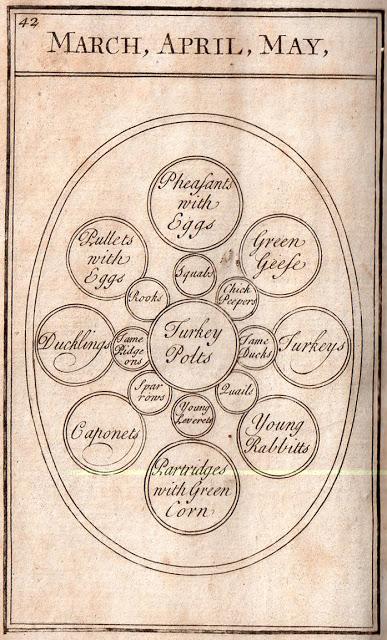
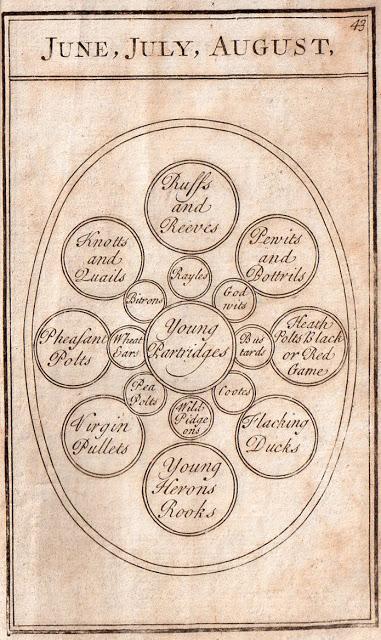
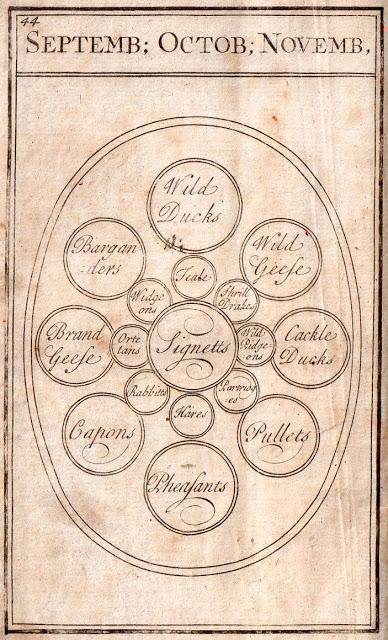
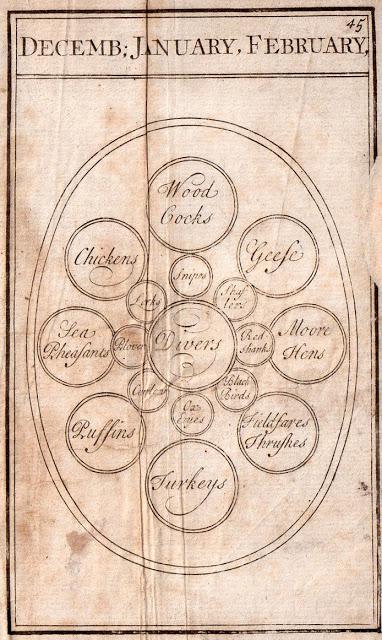
I think this justifies my claim that the English were serial carnivores, though you must understand that a lot of the birds served up at these dinners, such as the turkey polts, pheasant polts, squabs etc, are baby chicks, barely just growing into their juvenile feathers. So the English were also serial infanticides. Unlike his modern equivalent, the Georgian diner had no sentimental difficulties when it came to eating babies - they tasted better than adults, so what was the problem?
If a scorched earth ornithological orgy every three months failed to sate your appetite, you could always turn your gustatory inclinations to the scaly creatures of the briny deep. Here is another of Carter's great feasts, this time A Table of all Sorts of Fish, published in his third book The London and Country Cook (London; 1749).
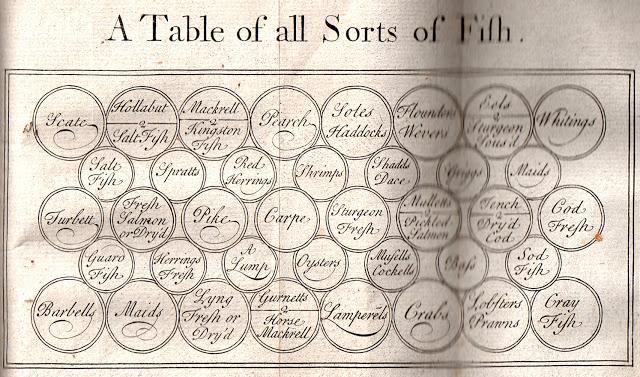
Ever since the medieval period some classes of Englishmen have liked to have plenty of variety on the table in front of them. Fear of mass extinctions just did not cross their minds. This was particulary true at the great livery company feasts in the City of London. The poet Edward Hake writing in 1579 in his Newes out of St Powles Churchyard describes the variety of birds served at one of these occasions.
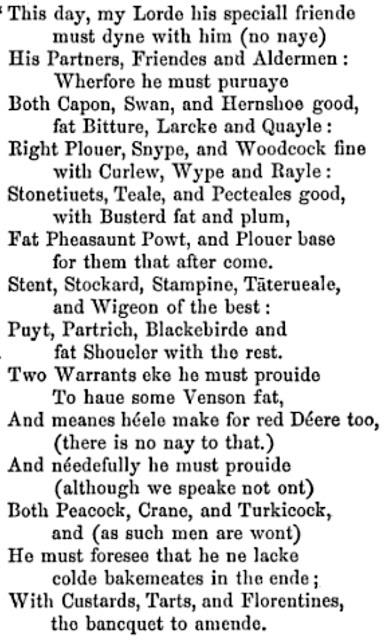
The keen bird watchers among you (and thanks to all those who helped me identify water dab as the little grebe) should have fun identifying some of these creatures from their Tudor names. Well over a decade ago I created a table at the Museum of London that was based on a feast book for the Grocers' Company from 1566. Here is the table, an avian disaster zone if ever I saw one.
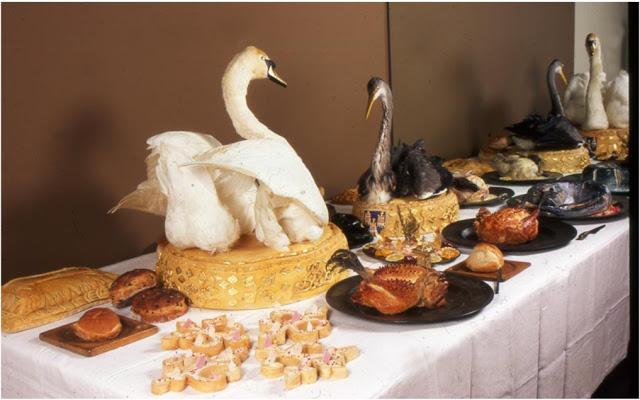
Well I hope that one day all those birds and fish and creatures consumed at City Feasts and other orgiastic mass extinctions eventually got their own back. Just recently I acquired a lovely copy of my favorite image of the joys of the revenge of the eaten on the eater. Based on Henry Fuseli's celebrated painting The Nightmare, this marvelous satyrical lithograph by MG (1830), shows Lord Mayor John Key being attacked by the creatures that should have made up his Lord Mayor's feast the previous evening, but for political reasons the feast was cancelled by the king. This image was first brought to my attention by my dear friend Gillian Riley when we worked together in 2000 on the exhibiton Eat, Drink and be Merry. It became the banner image of the exhibition so I am so pleased after all these years to have found a nice copy to hang in my own study. I will let the creatures of Mayor Key's abortive feast have the last word and I hope that that huge green turtle had been nursing a really chronic case of halitosis on its long sea voyage from the Caribbean.
